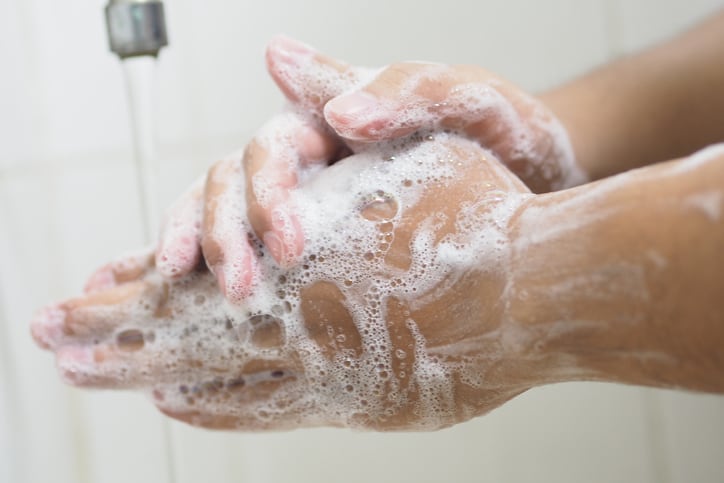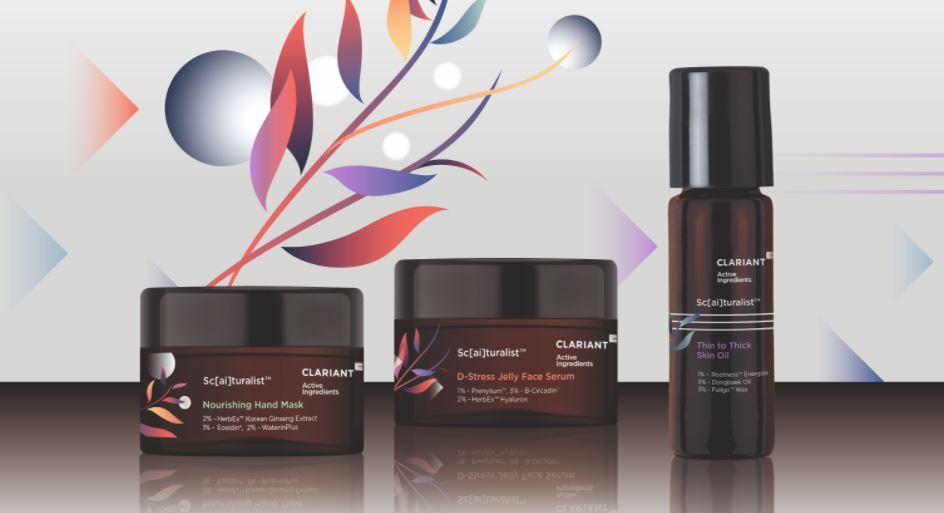Its research uncovered that lactic acid found on human hands can protect against bacteria and viruses such as the common cold and influenza.
The study revealed that human hands are naturally equipped with a barrier function to reduce bacteria and viruses that cause infectious diseases
The main component of this barrier was lactic acid contained in sweat secreted from the hands, leading researchers to believe it is crucial to antimicrobial activity.
The researchers evaluated hand samples from the 54 volunteers to identify the compounds responsible for the antibacterial and antiviral activity.
High levels of lactic acid were found, suggesting that it was an important factor in the hand surface infection barrier.
This hypothesis was tested by applying a lactic acid solution was then applied to the volunteers’ hands with varying amounts.
Researcher observed that antibacterial activity increased as the amount of lactic acid increased.
Kao believes this discovery could lead to new approaches toward hygiene practices to enhance the inherent barrier function of the hands.
For instance, Kao said it was looking into the development of hand care products with lactic acid for long-lasting antimicrobial protection.
It said this was still under research for commercialisation and it would be necessary for the firm to work on improving product performance and consider other product features.
“Kao will continue its in-depth research on the hand surface infection barrier function and propose new hygiene behaviours in order to contribute to the realization of infection prevention behaviour that will protect people around the world from various infectious diseases as well as from the distress they cause.”
A protective barrier
Researchers also noted that this barrier function varies between individuals and is linked to individuals' susceptibility to the common cold and influenza.
“Although washing the hands and using alcohol-based hand sanitisers are common methods of keeping the hands clean by removing and inactivating bacteria and viruses, their effects are transient. In contrast, this inherent barrier function of the hands is consistent and permanent.”
The study was conducted by Personal Health Care Product Research Laboratory, the Biological Science Research Laboratory, and the Analytical Science Research Laboratory of Kao Corporation.
According to the Japanese company, this is the first apparent discovery of these relationships and it has since pre-published these findings in medRxiv.
Kao researchers hypothesised that the surface of the human body had a protective mechanism just like how the body contains antibodies internally.
“As humans have co-existed with bacteria and viruses throughout their long history, our bodies are thought to have evolved various immune functions to protect against infectious diseases… As the hands are key parts of the human body that contact with the external environment as described above, they seemed likely to have some ability to control the pathogens.”
In one experiment, the researchers selected several volunteers who identified themselves as either highly resistant or susceptible to infectious diseases.
Residual bacteria was applied to the volunteers' hands and observed using the hand-stamp method immediately following the application and three minutes later.
It was observed that the number of E. coli decreased significantly on the volunteers who thought they had high resistance to infectious diseases.
The surface compounds on the hands of six volunteers were collected to evaluate their antibacterial and antiviral activity.
This confirmed the surface compounds on the volunteers’ hands had an inactivating effect against E. coli, as well as Staphylococcus aureus and the influenza A virus (H3N2).
Researchers noted that this effect varied among individuals as some exhibited a strong inactivation while others did not.
In another experiment, 10 volunteers were recruited to study how the antibacterial effect of the hand surface compounds changed during each day, and also from day to day.
The results revealed that the effect was rather consistent and permanent.
Based on these findings, the researchers concluded that human hands are equipped with a function that reduces bacteria and viruses, which Kao refers to as the ‘hand surface infection barrier’, and that its effects vary among individuals.
A method was developed to quantitatively measure the antimicrobial activity of the components found on the surface of hands, which was then compared with the medical history of the participants for infectious diseases.
Next, researchers selected a pool of 109 healthy male and female volunteers aged between 20 and 49.
Of the 109, 55 had caught influenza at least twice in the past three years while the other 54 had not caught a cold or influenza during the same periods.
The antimicrobial activity of the hand surfaces was evaluated and found to be positively associated with the history of infection in individuals.
This, said Kao, strongly suggested that those volunteers' hand surface infection barrier had contributed to their resistance to infectious diseases.
Source: medRxiv
Detailed Analysis of Surface Infection Barrier on Hands: Relationship with Morbidity to Infection Diseases and Identification of Antimicrobial Components
https://doi.org/10.1101/2020.12.09.20246306
Authors: Yuki Nishioka et al.



